Archive for September, 2012
Jussi Pekkarinen: Maailmanluokan tarkkailupaikka. Suomen Lontoon suurlähetystön historia [A world-class observation post. The history of Finland’s London embassy]
28 September 2012 | Mini reviews, Reviews
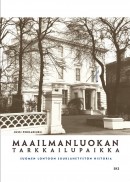 Maailmanluokan tarkkailupaikka. Suomen Lontoon suurlähetystön historia
Maailmanluokan tarkkailupaikka. Suomen Lontoon suurlähetystön historia
[A world-class observation post. The history of Finland’s London embassy]
Helsinki: Finnish Literature Society, 2012. 380 p., ill.
ISBN 978-952-222-365-4
€ 38, hardback
Finland’s diplomatic mission in London began its formation after the country gained its independence in 1918 and was officially recognised by Britain in 1919. The Embassy has always been important to Finland because of Britain’s leading significance for Finland and because Britain has been one of Finland’s most prominent trading partners. This interestingly written history, based on Finnish and British sources, also portrays the development of relations between the two countries. The ambassadors have been colourful and quick-tongued personalities; Pekkarinen describes some of the blunders caused by staff conflicts and cultural differences. As diplomacy is not merely representation – which in itself is a full-time job – it requires a mastery of issues relating to trade and politics. In addition to its depiction of the day-to-day work of the embassy staff, the book provides more general information about the diplomatic mission. Pekkarinen – a researcher in the Foreign Ministry – covers the period up to the early 1990s, but the concluding part of the book is a review of the embassy’s situation today by the current ambassador.
Translated by David McDuff
Sex, violence and horror, anyone?
20 September 2012 | Letter from the Editors
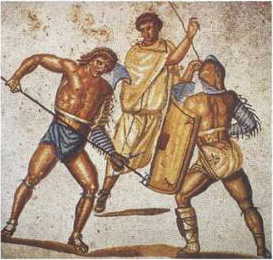
Gladiatorial entertainment: Mosaic from the Roman villa at Nennig (Germany), 2nd-3rd century AD. Picture: Wikipedia
In our last Letter, ‘Art for art’s sake’, we pondered how the efforts of making art (or design) profitable and exportable result, in public discourse, in the expectation that art (or design) should aid the development of business.
Not a lot is talked about how business can help art.
Art of course, is in essence ‘no use’, art doesn’t exist in order to increase the GDP (although nothing prevents it from doing so, of course).
The Finnish poet-author-translator Pentti Saarikoski (1937–1983) argued that art needs no apologies whatsoever: ‘What’s wrong with “Art for art’s sake”? – any more than bread for bread’s sake?
‘Art is art and bread is bread, and people need both if they are to have a balanced diet.’
Defining what is entertainment is and what is art is not always significant or necessary. The boundaries can be artificial, or superficial. But occasionally one wonders where the makers of ‘entertainment’ think it’s going. Entertainment for entertainment’s sake?
The Finnish Broadcasting Company (YLE) recently announced a new radio play series. It is, it said, a series that differs stylistically from traditional radio plays; it seeks a new and younger audience. The news item was headlined: ‘The new radio play drips with sex, violence and horror.’ In a television interview the director said that the radio dramaturge who had commissioned the series had described what the (new, younger) listeners should experience: ‘They should feel thrilled and horny all the time.’ More…
Monika Fagerholm: Lolauppochner [Lola upside down]
20 September 2012 | Mini reviews, Reviews
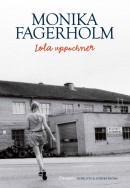 Lolauppochner
Lolauppochner
[Lola upside down]
Helsinki: Schildts & Söderströms, 2012. 461 p.
ISBN 978-951-52-2997-7
€ 31, hardback
Lola ylösalaisin
Suomentanut [Translated into Finnish by]: Liisa Ryömä
Helsinki: Teos, 2012. 300 p.
ISBN 978-951-851-480-3
€28.40, hardback
Lolauppochner (‘Lola upside down’) is a more authentic crime novel than the same author’s Den amerikanska flickan (English translation: The American Girl, 2004) and Glitterscenen (The Glitter Scene, 2009), though they too wove their dense fiction around an old crime. Readers who are at ease in Fagerholm’s luxuriant wordscapes with their tragic teens, country bumpkins and summer visitors will still be able to find their way around the small community where Jana Marton, a teenage girl on the way to her job at the local store, discovers the corpse of a boy, a key player among the local gilded youth. The novel’s opening, and many sections that follow, are extremely effective, with sharp and lightning-swift characterisations and a fine intuition for both the fear and the excitement in the social circle where the murder turns up hidden connections like worms from the soil. But the novel is too long for its own good – somewhere towards the end it ceases to gain depth, and the gallery of characters starts to feel too big. All the same, this book is a must for Fagerholm’s readership at home and abroad. A bonus for locals – and attentive outsiders – is present in the outlines of the small seaside town of Ekenäs that can be glimpsed behind the text. They supply a kind of physical magic that rubs off on much else besides – characters, moods and sense of place.
Translated by David McDuff
Government prize for translation 2012
14 September 2012 | In the news
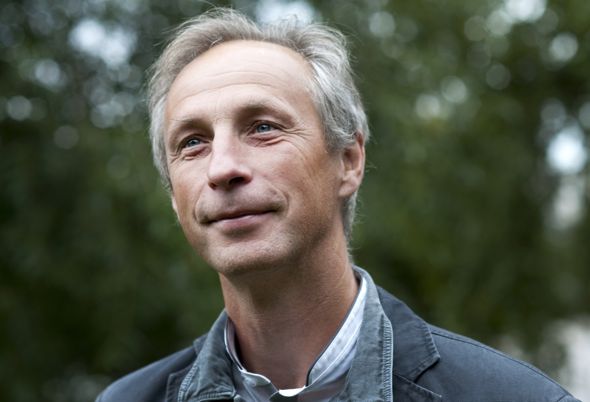
Vladimír Piskoř. Photo: Charlotta Boucht
The Finnish Government Prize for the Translation of Finnish Literature of 2012 – worth €15,000 – was awarded to the Czech translator Vladimír Piskoř.
Piskoř (born 1960), graduated from the Charles University of Prague in 1984, majoring in Finnish. Since the early 1990s he has translated almost 30 titles, most by contemporary authors, including Kristina Carlson, Kari Hotakainen, Leena Krohn, Rosa Liksom, Asko Sahlberg, Juha Seppälä, Petri Tamminen and Maria Peura.
‘I personally am fond of the novels by Kari Hotakainen: I sometimes play with the idea of becoming a writer myself, and I find his style and themes particularly interesting. Kristina Carlson’s latest novel Herra Darwinin puutarhuri (‘Mr Darwin’s gardener’, 2010) is a truly inspiring work both as a reader and a translator,’ he says.
Piskoř is currently working on Kari Hotakainen’s novel Jumalan sana (‘The word of God’) and Leena Lander’s historical novel Käsky (‘Command’). In 2006 he was awarded the Czech translators’ special prize for the novel Höyhen (‘Feather’) by Asko Sahlberg.
Vladimír Piskoř received his award in Helsinki on 10 September from State Secretary Jarmo Lindén; he thanked Piskoř for the work he has done for the last twenty years, particularly in the field of contemporary Finnish fiction.
The prize has been awarded – now for the 38th time – by the Ministry of Education and Culture since 1975 on the basis of a recommendation by FILI – Finnish Literature Exchange.
Olli Jalonen: Karatolla
14 September 2012 | Mini reviews, Reviews
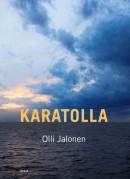 Karatolla
Karatolla
Helsinki, Otava, 2012. 238 p.
ISBN 978-951-1-26469-9
€34.10, hardback
Karatolla is a Finnish dialect word for a bonfire that is lit at New Year or Easter. One of the main characters in Olli Jalonen’s new novel (his twenty-first publication to date) is an artist called Valo, ‘Light’. By the fires of his youth he has come to learn that the world is composed of nine basic elements: fire, smoke, light, earth, water, snow, ice, air, and time. At the beginning of the twenty-first century Valo and his colleague the architect Silla set out to construct a major European art work in which pyramids built of the above-mentioned elements are assembled in Prague, Brussels, Santiago de Compostela, Krakow, Reykjavik, Bergen, Helsinki, Avignon and Bologna respectively. In this novel Jalonen (born 1954) develops themes from his previous novel Yhdeksän pyramidia (‘Nine pyramids’), published in 2000: the events have moved forward ten years. When the project is completed, a nascent love affair between Light and Silla ends when Light falls victim to a fatal illness. Jalonen’s narrative is fascinating; the construction of pyramids, the cities in which they are constructed and the characters are portrayed with great skill, developing themes of artistry, honesty and the fragility of love. Much open space is left for the reader’s thoughts and imagination.
Translated by David McDuff
A door to the other side
7 September 2012 | Extracts, Non-fiction
Building bird-houses is author Jyrki Vainonen’s hobby: he has crafted dozens of nesting boxes and hung them on trees for winged tenants. Roaming in the woods may be bring surprises, though: the bird-house man suddenly finds the world underfoot opening up or a moment… An extract from the collection of stories Linnunpöntön rakentaja (‘Builder of bird-houses’, Atena, 2012)
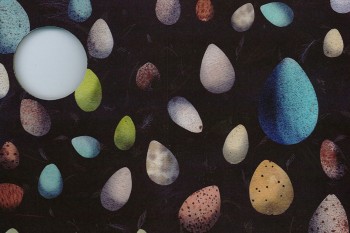
Birds coming up… Inside front cover of Linnunpöntön rakentaja by Elina Warsta/Solmu
The hinge was rusty, but after a cleaning and oiling it seemed to work, and didn’t even squeak. I had found it in a piece of board that was lying beside the road on the way to the dump. The board may have once served as part of a door frame.
The next day I rode my bike there again and unscrewed the hinge from the board, and now it looked quite handsome attached to the side wall of the birdhouse. I set the still floorless, roofless box upright and tried the door, opening the clasp and lifting the side wall on its hinges. It worked well, didn’t jam or make any sound. Next I attached the pieces of wood I’d already cut to form the roof and floor of the birdhouse. I inserted the floor and nailed through the three walls of the box – all except the wall that formed the door. Then I nailed the roof in place with several nails.
Now I had a box that would make it easy to watch the life inside. It would doubtless be wonderful to be able to see the nest from so close, and from the side rather than the top, as I usually had before. I could take photos, too. More…
Comics come to Helsinki
7 September 2012 | In the news
 Comics are the ‘ninth art’, according to the organisers of the 27th Helsinki Comics Festival, which runs from 7 to 9 September.
Comics are the ‘ninth art’, according to the organisers of the 27th Helsinki Comics Festival, which runs from 7 to 9 September.
This time, the special theme examines comics in relation to visual arts, and the main venue of the Festival is the Kiasma Museum of Contemporary Art in Helsinki. An exhibition entitled Eyeballing! and a concert series where comics meet music will take place there – artists improvise drawings inspired by live music.
Belgium is the country of focus; in the homeland of the classic Tintin the tradition and the experimental forms of comics live side by side. Among the guest artists will be Benôit Sokal and François Schuiten, Gert Meesters and Herr Seele from Belgium, Émile Bravo from France and Arne Bellstorf from Germany. Tommi Musturi and Amanda Vähämäki are the Finnish guests.
The ninth art? In Greek mythology, the Muses are nine goddesses personifying the fields of the arts. So nowadays Polymnia, Clio, Melpomene, Urania, Euterpe, Terpsichore, Calliope, Erato and Thalia inspire, respectively, painting (including drawing and photography), sculpture, theatre, architecture, music, dance, literature, cinema (as well as television & video) – and comics.
Thalia is ‘the amused muse’: in most languages the term for comics is a variant of ‘comic story’ or ‘amusing art’ – but the Finns call comics sarjakuva (serial pictures), which is what they mostly are.
Mirkka Lappalainen: Jumalan vihan ruoska. Suuri nälänhätä Suomessa 1695–1697 [The lash of God’s wrath. The Great Famine in Finland 1695–1697]
7 September 2012 | Mini reviews, Reviews
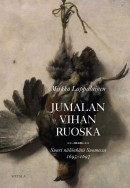 Jumalan vihan ruoska. Suuri nälänhätä Suomessa 1695–1697
Jumalan vihan ruoska. Suuri nälänhätä Suomessa 1695–1697
[The lash of God’s wrath. The Great Famine in Finland 1695–1697]
Helsinki: Siltala, 2012. 262 p., ill.
ISBN 978-952-234-140-2
€25.50, hardback
There were two major famines in Finnish history: the Great Famine of 1695–97 and the hunger years of 1867–68. Basing her work on the latest research, historian Mirkka Lappalainen has written a general study of the earliest and most deadly years of crop failure. The famine struck Europe just as it was experiencing the main phase of the so-called Little Ice Age. Finland was one of the worst affected countries, as it had only just begun to derive a living from agriculture, and nearly a third of its population died. Finland was governed by the autocratic, centralised great power Sweden; frosts and rains destroyed hundreds throughout the kingdom, but the magnitude of the disaster in Finland was increased by the bureaucratic inertia of the centre in distributing aid, as well as the emergency food (moss, for example) which caused intestinal disorders, and the spreading of disease by beggars. The aid was also distributed unequally within the regions of Finland. In her book Lappalainen describes the fates of kings, gentry and rural poor as reflected in sources that include letters and official court records.
Translated by David McDuff
